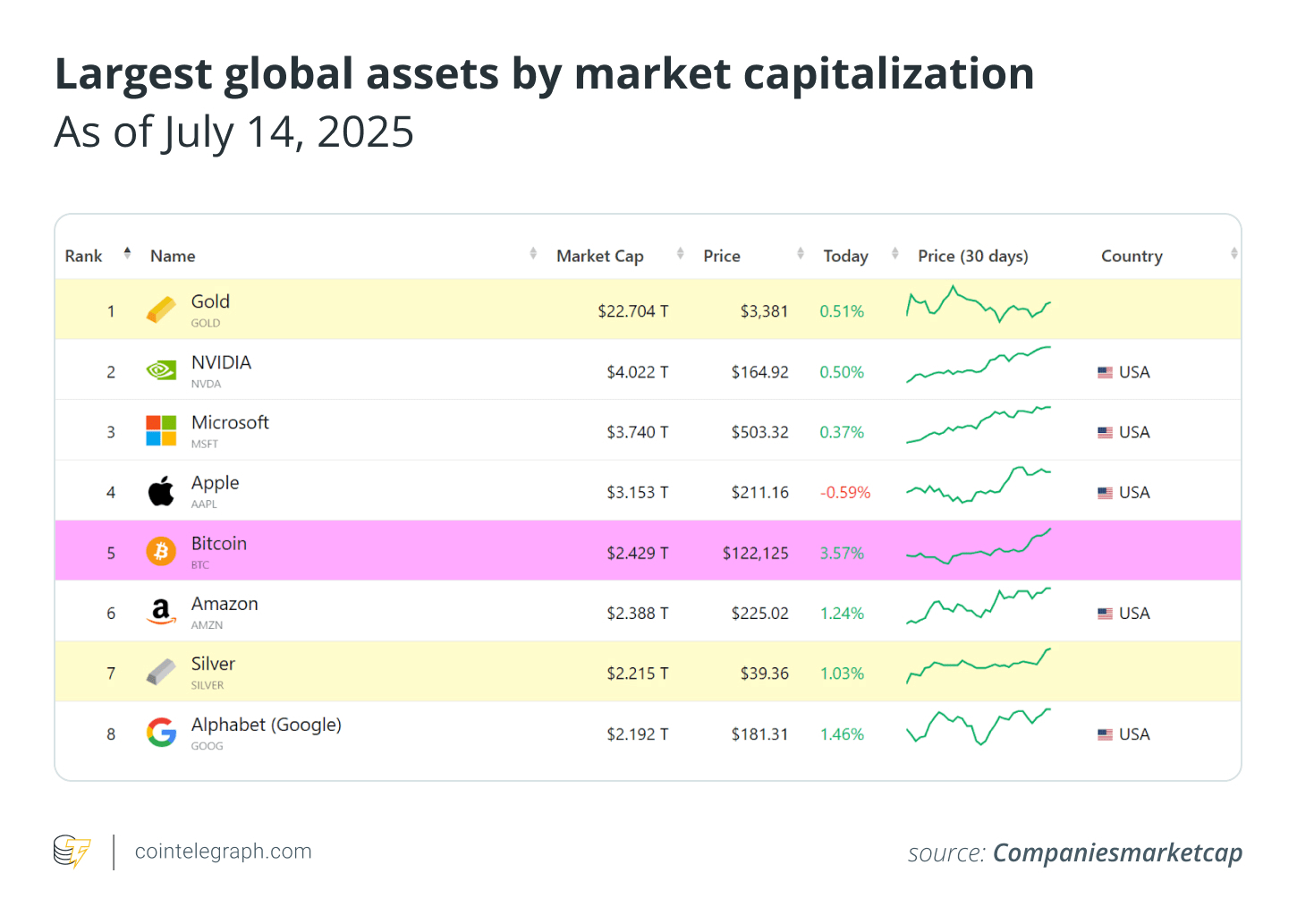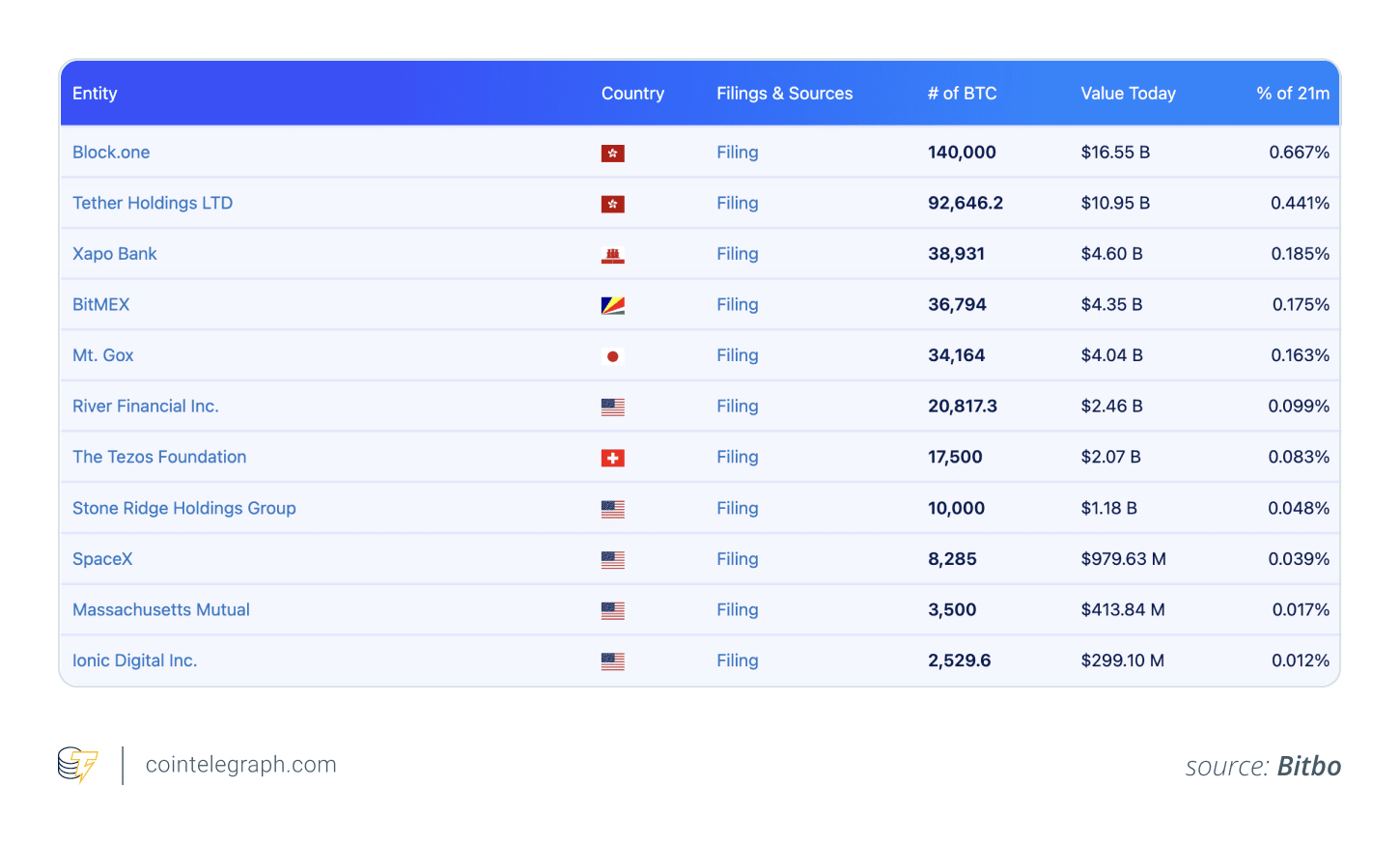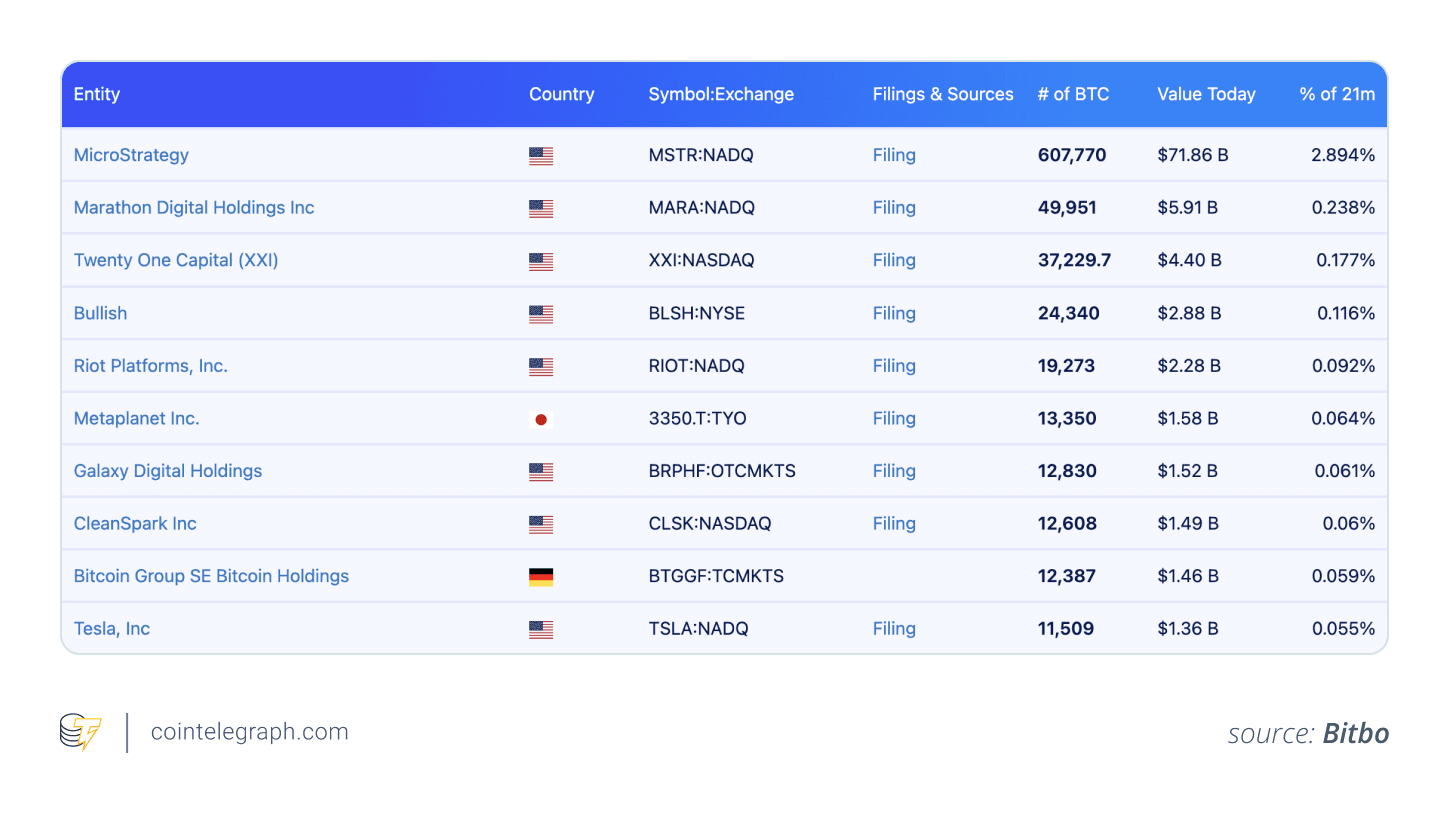Bitcoin will surpass Amazon in 2025.
On July 14, 2025, Bitcoin surpassed a historic milestone, soaring above $122,600, with a market cap of approximately $2.4 trillion, exceeding Amazon's estimated $2.3 trillion.
Thus, Bitcoin has officially joined the ranks of the top five most valuable assets globally.
This is not a slow burn. Fueled by record inflows into Bitcoin spot exchange-traded funds (ETFs) and increasing institutional demand.
has driven Bitcoin to rise nearly 13% in just one week.
In surpassing Amazon, Bitcoin's market capitalization has also exceeded that of silver (approximately $2.2 trillion) and Google (Alphabet, approximately $2.19 trillion).

Bitcoin versus Amazon's market cap: What are the driving factors behind its rise?
Fund inflows, institutions, and policies have laid the groundwork for Bitcoin's market value rise.
Spot Bitcoin ETF inflows
The demand for spot Bitcoin ETFs is unprecedented. On July 10 and 11 alone, products listed in the US attracted $1.17 billion and $1.03 billion in inflows respectively, marking the first time since their launch in January 2024 that two consecutive days exceeded $1 billion in daily inflows.
These fund flows helped propel Bitcoin past the $120,000 mark and enhanced the asset's responsiveness to ETF demand.
BlackRock's IBIT is the market leader, currently managing over $80 billion in assets. The ongoing ETF purchasing frenzy is reshaping investment channels, liquidity, and perceptions.
'Cryptocurrency Week'
Meanwhile, Washington has introduced a series of cryptocurrency-focused legislations. The CLARITY Act, the GENIUS Act, and the Anti-CBDC Surveillance Act passed in Congress under a unified push known as 'Cryptocurrency Week.'
For years, regulatory uncertainty has hindered institutional participation. But these bills provide rare consistency: clearer frameworks, stronger protections, and explicit political support. The US government signals that cryptocurrencies have a place in regulated finance, further legitimizing Bitcoin's role in institutional portfolios.
Favorable macro backdrop
Bitcoin's rise is also about timing. Under the newly elected Trump administration, cryptocurrency policy has shifted to a more friendly stance. This shift, coupled with a weakening dollar and the trend toward seeking alternatives to centralized currencies, is sparking interest.
Meanwhile, the correlation between Bitcoin and stocks has surged. A study from January 2025 showed that the rolling correlation of BTC with the Nasdaq index and the S&P 500 reached 0.87—indicating that investors now view Bitcoin as part of a broader risk asset landscape. Bitcoin is no longer a fringe investment but resembles a tech stock with asymmetric upside potential.
Taken together, these forces (strong ETF inflows, regulatory clarity, and macro tailwinds) explain why Bitcoin is now accelerating upward.
Bitcoin: The five major assets: From zero to trillions
The price of Bitcoin was $0.10 in 2010. By July 2025, the price of Bitcoin exceeded $122,000. This means that in just 15 years, Bitcoin's price has increased by over 1.2 million times (1,219,999%). Few assets in history have experienced such extreme volatility and such great transformation.
Bitcoin's scarcity
At the core of Bitcoin's design is scarcity. Bitcoin has a hard cap of 21 million coins, and its economic mechanism is similar to gold, but Bitcoin is digital, transparent, and borderless.
Bitcoin is part of a broader discussion about the future of currency. For many, it has replaced gold as a long-term store of value and an inflation hedge. The Bitcoin versus gold debate is raising a new question: How high can Bitcoin's market value go?
Did you know? In 2013, a Welsh IT engineer accidentally threw a hard drive containing 8,000 Bitcoins (now worth hundreds of millions) into a landfill in Newport. Despite attempts to dig it out, they ultimately failed.
Companies holding Bitcoin in 2025
The story of Bitcoin's adoption is also related to who holds it.
As of July 2025:
More than 265 publicly traded and private companies collectively hold 853,000 BTC, accounting for about 4% of the total supply. This includes companies like Strategy, Tesla, and Square.
Spot Bitcoin ETFs currently hold about 1.4 million BTC (6.6% of the supply), making ETFs one of the largest custodians of BTC globally.


The layout of these institutions supports Bitcoin's current market value and lays the foundation for future growth. It is no longer just a pipe dream for Bitcoin to reach valuation levels comparable to Apple or Microsoft.
Did you know? The US-listed medical device company Semler Scientific has transformed into a significant Bitcoin fund management company. After spending $20 million to acquire Bitcoin in just a few months, as of June 2025, the company holds approximately 4,450 Bitcoins (worth nearly $472 million).
Bitcoin price prediction: $167,000
Today, Bitcoin has surpassed Amazon, Google, and silver, and attention has shifted to the remaining giants. The next targets are Apple and Microsoft.
The next milestone
Enmanuel Cardozo of Brickken believes that if the macro environment remains favorable and institutional demand continues to accelerate, Bitcoin may soon challenge Apple's $3.1 trillion market cap. This would require BTC to exceed $142,000.
Further ahead, Microsoft's $3.6 trillion valuation comes into view. To reach this level, Bitcoin's price would need to rise to around $167,000.
Bullish market predictions
Major financial institutions are updating their models. Standard Chartered expects Bitcoin's price to reach $135,000 by the third quarter, potentially surpassing $200,000 by the end of the year, driven by strong ETF demand and continued accumulation by institutional investors.
SkyBridge founder Anthony Scaramucci predicts Bitcoin's price will be between $180,000 and $200,000. He notes that increasing wallet adoption, growing interest in Bitcoin as a strategic reserve, and the acceleration of ETF purchases are the main driving factors.
It is widely believed that Bitcoin's transition to mainstream financial infrastructure is still in its early stages.
What problems could arise?
Bullish predictions depend on two things:
ETF inflows must continue to maintain scale. If interest in the funds wanes, the momentum may fade as well.
Regulatory clarity must improve and cannot stagnate. If there are long-term setbacks or political resistance, the progress made after Congress's 'Cryptocurrency Week' will be difficult to sustain.
Additionally, Bitcoin has become sensitive to interest rate signals, policy changes, and broader market liquidity, all of which can lead to sharp price fluctuations.
Why is it important that Bitcoin surpass Amazon in the future of finance?
Surpassing Amazon's valuation symbolizes Bitcoin's rise to become one of the top five assets.
1. Legitimization
Bitcoin's market cap has surpassed $2.4 trillion, making it one of the defining assets of today's capital markets. Bitcoin's legitimacy was once questioned but is now favored by institutional allocators, sovereign wealth funds, and regulated investment products.
2. Portfolio Evolution
An important insight for 2025 is how the correlation between Bitcoin and stocks has evolved. It is now tracking the broader market more closely than ever.
In other words, Bitcoin is becoming part of the diversified portfolio discussion alongside stocks, bonds, and real-world asset tokenization strategies.
3. Regulation and Application
Legislation such as the CLARITY Act and the GENIUS Act consolidates the position of cryptocurrencies within the US legal framework. Regulation may ultimately catch up with the pace of adoption.
That Bitcoin could rise to this extent was once unimaginable. But now, with the rise of Apple and Microsoft, Bitcoin's next surge may be even more dramatic.
